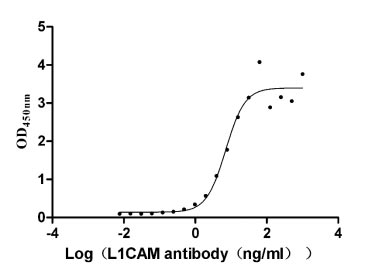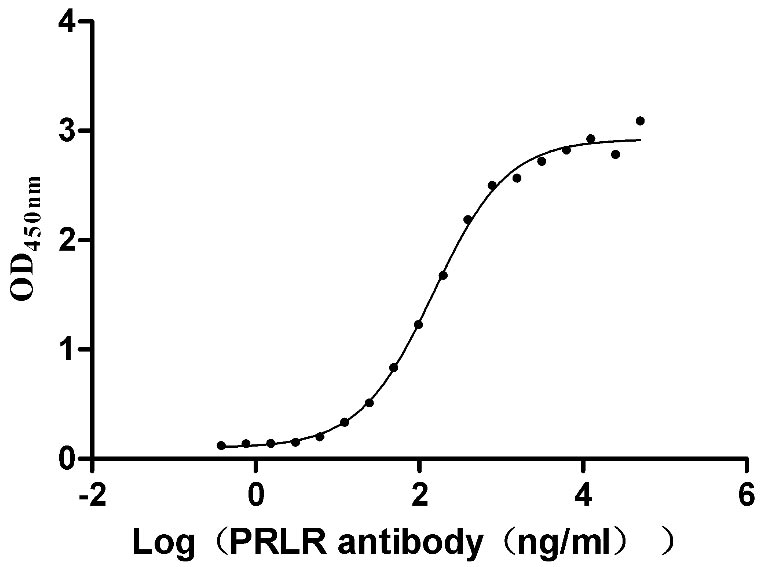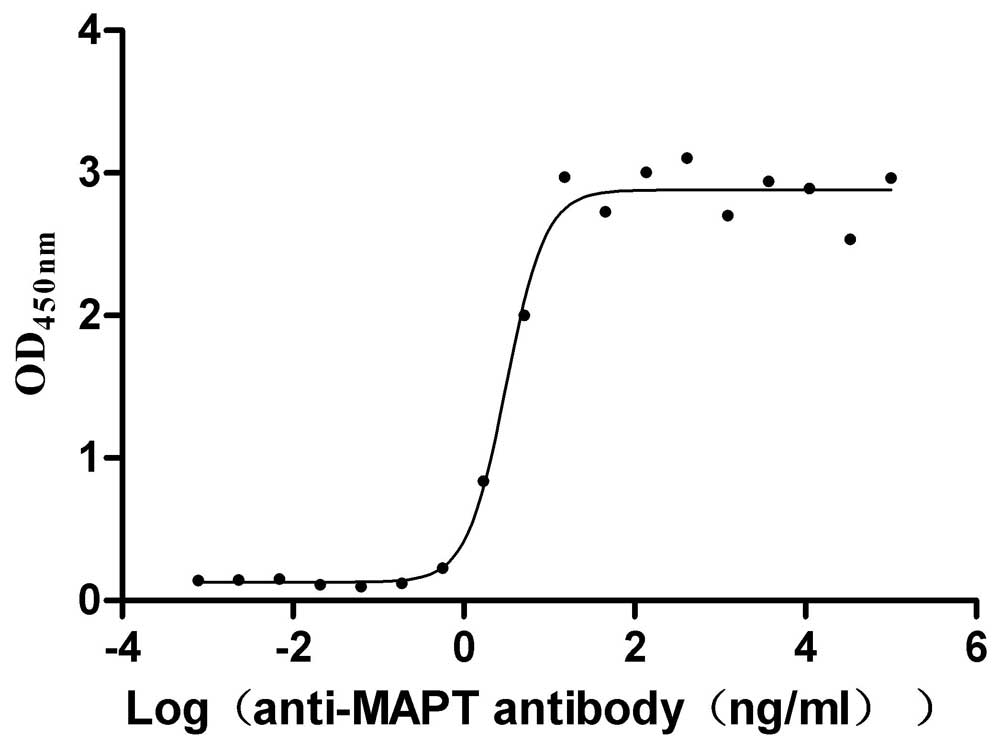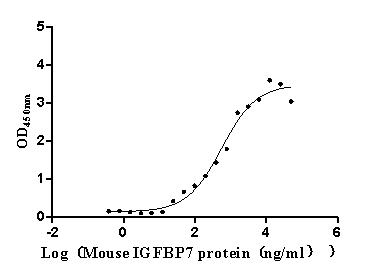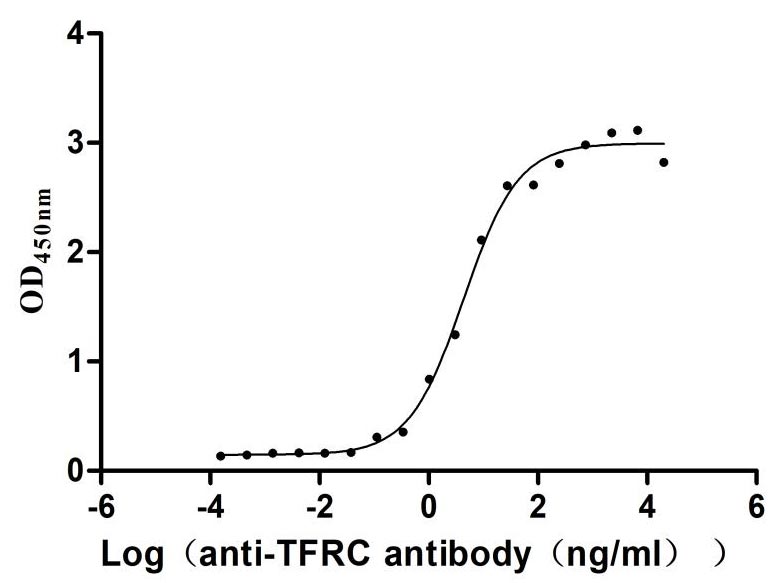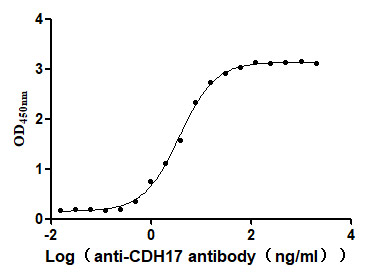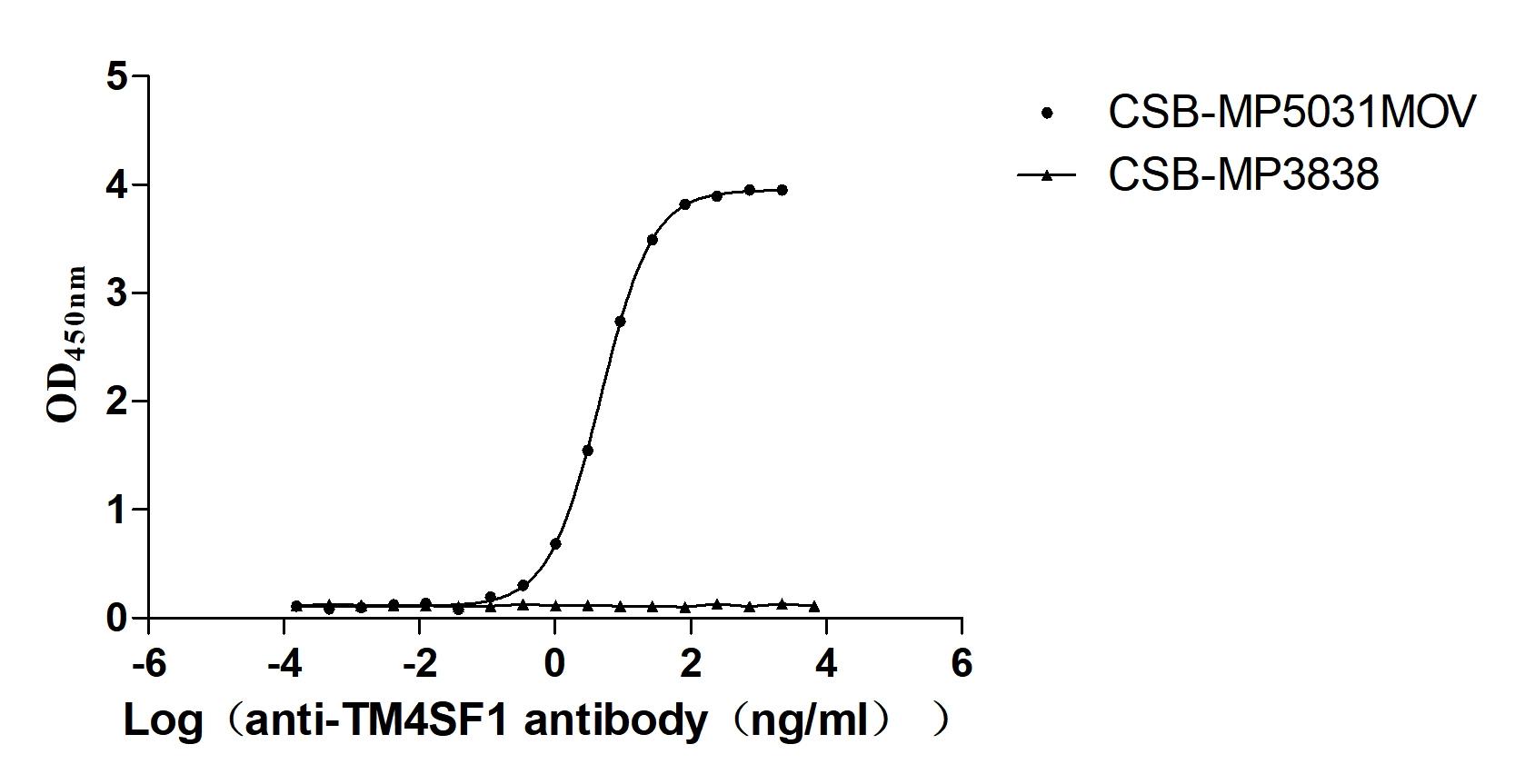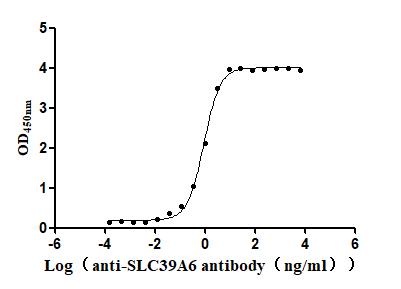Recombinant Human UDP-glucuronosyltransferase 1-10 (UGT1A10), partial
-
中文名稱:人UGT1A10重組蛋白
-
貨號:CSB-YP862057HU1
-
規格:
-
來源:Yeast
-
其他:
-
中文名稱:人UGT1A10重組蛋白
-
貨號:CSB-EP862057HU1
-
規格:
-
來源:E.coli
-
其他:
-
中文名稱:人UGT1A10重組蛋白
-
貨號:CSB-EP862057HU1-B
-
規格:
-
來源:E.coli
-
共軛:Avi-tag Biotinylated
E. coli biotin ligase (BirA) is highly specific in covalently attaching biotin to the 15 amino acid AviTag peptide. This recombinant protein was biotinylated in vivo by AviTag-BirA technology, which method is BriA catalyzes amide linkage between the biotin and the specific lysine of the AviTag.
-
其他:
-
中文名稱:人UGT1A10重組蛋白
-
貨號:CSB-BP862057HU1
-
規格:
-
來源:Baculovirus
-
其他:
-
中文名稱:人UGT1A10重組蛋白
-
貨號:CSB-MP862057HU1
-
規格:
-
來源:Mammalian cell
-
其他:
產品詳情
-
純度:>85% (SDS-PAGE)
-
基因名:UGT1A10
-
Uniprot No.:
-
別名:UGT1A10; GNT1; UGT1; UDP-glucuronosyltransferase 1A10; UGT1A10; UDP-glucuronosyltransferase 1-10; UDPGT 1-10; UGT1*10; UGT1-10; UGT1.10; UDP-glucuronosyltransferase 1-J; UGT-1J; UGT1J
-
種屬:Homo sapiens (Human)
-
蛋白長度:Partial
-
蛋白標簽:Tag?type?will?be?determined?during?the?manufacturing?process.
The tag type will be determined during production process. If you have specified tag type, please tell us and we will develop the specified tag preferentially. -
產品提供形式:Lyophilized powder
Note: We will preferentially ship the format that we have in stock, however, if you have any special requirement for the format, please remark your requirement when placing the order, we will prepare according to your demand. -
復溶:We recommend that this vial be briefly centrifuged prior to opening to bring the contents to the bottom. Please reconstitute protein in deionized sterile water to a concentration of 0.1-1.0 mg/mL.We recommend to add 5-50% of glycerol (final concentration) and aliquot for long-term storage at -20℃/-80℃. Our default final concentration of glycerol is 50%. Customers could use it as reference.
-
儲存條件:Store at -20°C/-80°C upon receipt, aliquoting is necessary for mutiple use. Avoid repeated freeze-thaw cycles.
-
保質期:The shelf life is related to many factors, storage state, buffer ingredients, storage temperature and the stability of the protein itself.
Generally, the shelf life of liquid form is 6 months at -20°C/-80°C. The shelf life of lyophilized form is 12 months at -20°C/-80°C. -
貨期:Delivery time may differ from different purchasing way or location, please kindly consult your local distributors for specific delivery time.Note: All of our proteins are default shipped with normal blue ice packs, if you request to ship with dry ice, please communicate with us in advance and extra fees will be charged.
-
注意事項:Repeated freezing and thawing is not recommended. Store working aliquots at 4°C for up to one week.
-
Datasheet :Please contact us to get it.
相關產品
靶點詳情
-
功能:UDP-glucuronosyltransferase (UGT) that catalyzes phase II biotransformation reactions in which lipophilic substrates are conjugated with glucuronic acid to increase the metabolite's water solubility, thereby facilitating excretion into either the urine or bile. Essential for the elimination and detoxification of drugs, xenobiotics and endogenous compounds. Catalyzes the glucuronidation of endogenous estrogen hormones such as estradiol, estrone and estriol. Also catalyzes the glucuronidation of the isoflavones genistein, daidzein, glycitein, formononetin, biochanin A and prunetin, which are phytoestrogens with anticancer and cardiovascular properties. Involved in the glucuronidation of the AGTR1 angiotensin receptor antagonist losartan, caderastan and zolarsatan, drugs which can inhibit the effect of angiotensin II.; Lacks UGT glucuronidation activity but acts as a negative regulator of isoform 1.
-
基因功能參考文獻:
- UGT1A10 exhibited somewhat higher BPA glucuronidation activity than UGT1A9, but it was lower than UGT2A1 and UGT2B15. 4. PMID: 25547628
- In further studies with UGT1A10, mutant F93G exhibited increased glucuronidation rates of 16alpha-hydroxyestrone, but not estrone PMID: 26220143
- A graphene nanocage with regulatable space for the assembly of a CYP1A2-UGT1A10 bienzyme complex has been constructed via a click reaction, and used to study drug sequential metabolism using an electrochemically-driven method. PMID: 25264962
- DNA hypermethylation results in defective expression of UGT1A10 in the liver. PMID: 24239897
- Suggest that extrahepatic UGT1A10 plays an important role in the metabolism and the bioactivation of the antitumor agent C-1305. PMID: 23160818
- Triazoloacridinone and imidazoacridinone antitumor agents C-1305 and C-1311 are glucuronidated in human liver and intestine. PMID: 22659092
- Data suggest that darexaban glucuronidation in jejunum microsomes is mainly catalyzed by UGT1A10; studies include kinetics of recombinant UGT proteins, liver microsomes, and jejunal microsomes (and UGT isoform-specific inhibitors/substrates). PMID: 22031623
- role of Phenylalanine 93 in UGT1A10 PMID: 21846474
- The results also indicated that UGT1A1, UGT1A7, UGT1A8, UGT1A9, UGT1A10 and UGT2B7 are the most important six UGT isoforms for metabolizing the three dihydroxyflavones and seven monohydroxyflavones. PMID: 20297805
- it appears that residues within segment C of the N-terminal domain, mainly at positions 152 and 169, contribute to the higher glucuronidation rates of UGT1A10 PMID: 20089735
- Data suggest that UGT1A10 is important in detoxification of the carcinogen NNAL and that polymorphisms in UGT1A10 promoter (and thus altered gene expression) may be important in susceptibility to hepatocellular carcinoma. PMID: 20007297
- Data point to UGT1A10 as primary UGT isoform metabolizing psilocin (a hallucinogenic indole alkaloid) in small intestine; kinetic studies are included. PMID: 20007669
- UGT1A8, 1A9, and 1A10 genes are differentially regulated through an initiator element in their 5'-flanking regions PMID: 12847094
- the UGT1A10 gene has several low-frequency missense polymorphisms and that the codon 139 polymorphism is an independent risk factor for orolaryngeal carcinoma in blacks PMID: 12910533
- gastrointestinally distributed UGT1A10 is important for detoxifying estrogens/phytoestrogens and aromatic acids with complementary activity by UGT1A7, -1A8, -1A3, and/or -1A1 evidently dependent upon phosphorylation PMID: 15117964
- structure-function analysis of UGT1A10 and its glucuronidation of bioflavonoids PMID: 16019943
- Analysis of recombinant UGTs from 1A family for their ability to glucuronidate p-nitrophenol & 4-methylumbelliferone revealed that UGT1A10 shows high activity toward phenols. Phe(90) & Phe(93) are directly involved in the catalytic activity of UGT1A10. PMID: 16475821
- Results show UGT1A10 mRNA expression in primary hepatocytes by semi-quantitative RT-PCR. PMID: 17603215
- UGT1A7, UGT1A8, and UGT1A9 were mainly responsible for formation of prunetin-5- O-glucuronide; UGT1A1, UGT1A8, and UGT1A10 were mainly responsible for formation of prunetin-4'- O-glucuronide; thermostability of microsomes was isoform- and organ-dependent PMID: 18052087
- UDP-glucuronosyltransferase chemical detoxifying system requires regulated phosphorylation supported by protein kinase C PMID: 18556656
- UDP-glucuronic acid binds to specific sites in this enzyme. PMID: 18570380
- The binding motif residue phenylalanine-90 appears to be the most significant contributor to glucuronidation of UGT1A10 hydroxywarfarin substrates. Alanine mutation of this residue abolishes activity toward 6- and 7-hydroxywarfarin. PMID: 18725508
- Observational study of gene-disease association and pharmacogenomic / toxicogenomic. (HuGE Navigator) PMID: 17558305
顯示更多
收起更多
-
亞細胞定位:Endoplasmic reticulum membrane; Single-pass membrane protein.
-
蛋白家族:UDP-glycosyltransferase family
-
組織特異性:Liver and colon. Isoform 1 and isoform 2 are expressed in colon, esophagus and small intestine; isoform 2 but not isoform 1 is expressed in liver or kidney.
-
數據庫鏈接:
Most popular with customers
-
Recombinant Human Neural cell adhesion molecule L1 (L1CAM), partial (Active)
Express system: Mammalian cell
Species: Homo sapiens (Human)
-
Recombinant Human Prolactin receptor (PRLR), partial (Active)
Express system: Mammalian cell
Species: Homo sapiens (Human)
-
Recombinant Macaca mulatta Microtubule-associated protein tau (MAPT) (Active)
Express system: Mammalian cell
Species: Macaca mulatta (Rhesus macaque)
-
Recombinant Mouse Complement component C1q receptor (Cd93), partial (Active)
Express system: Mammalian cell
Species: Mus musculus (Mouse)
-
Recombinant Human Transferrin receptor protein 1 (TFRC), partial (Active)
Express system: Mammalian cell
Species: Homo sapiens (Human)
-
Recombinant Human Cadherin-17 (CDH17), partial (Active)
Express system: Mammalian cell
Species: Homo sapiens (Human)
-
Recombinant Macaca fascicularis Transmembrane 4 L6 family member 1 (TM4SF1)-VLPs (Active)
Express system: Mammalian cell
Species: Macaca fascicularis (Crab-eating macaque) (Cynomolgus monkey)
-
Recombinant Macaca fascicularis Zinc transporter ZIP6 isoform X1(SLC39A6),partial (Active)
Express system: Baculovirus
Species: Macaca fascicularis (Crab-eating macaque) (Cynomolgus monkey)


